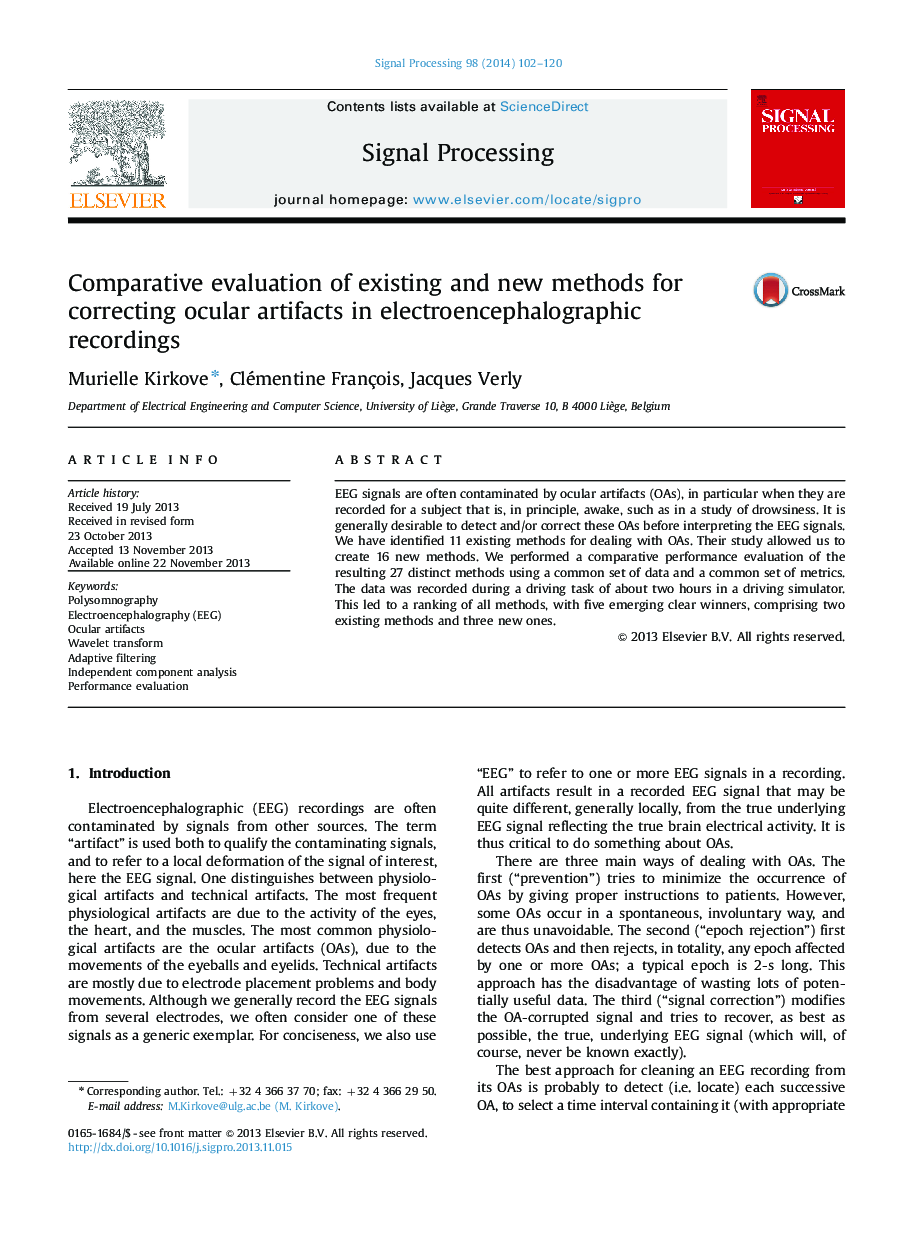| Article ID | Journal | Published Year | Pages | File Type |
|---|---|---|---|---|
| 563898 | Signal Processing | 2014 | 19 Pages |
•EEG signals are often contaminated by ocular artifacts (OA's).•It is generally desirable to detect and/or correct the OA's before interpreting the EEG signals.•We have identified 11 existing methods for dealing with OA's and we have created 16 new methods.•We performed a comparative performance evaluation of the resulting 27 methods using a common set of data and a common set of metrics.•The performance evaluation led to a ranking of all methods, with five emerging clear winners, comprising two existing methods and three new ones.
EEG signals are often contaminated by ocular artifacts (OAs), in particular when they are recorded for a subject that is, in principle, awake, such as in a study of drowsiness. It is generally desirable to detect and/or correct these OAs before interpreting the EEG signals. We have identified 11 existing methods for dealing with OAs. Their study allowed us to create 16 new methods. We performed a comparative performance evaluation of the resulting 27 distinct methods using a common set of data and a common set of metrics. The data was recorded during a driving task of about two hours in a driving simulator. This led to a ranking of all methods, with five emerging clear winners, comprising two existing methods and three new ones.
